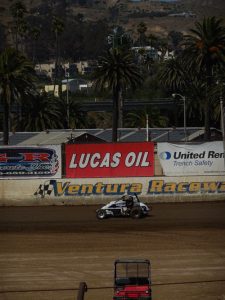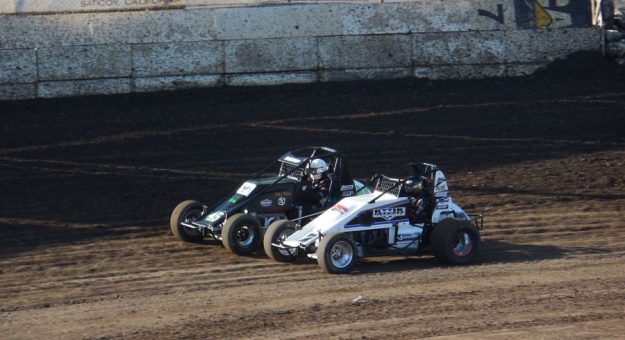INDIANAPOLIS — After racing on pavement since the beginning of the season, I finally had a chance to get down and dirty in a 360 sprint car at California’s Ventura Raceway.
I had to wait a few months to finally get a chance to run on dirt after my first dirt feature was rained out. I was hooked on the taste of racing a high-powered car on dirt from the laps I ran a few months ago, and I’ve been licking my chops over that ever since.
It was beautiful weather in my return trip to Ventura, so I got the full experience of running hot laps, heats and the main event without any issues.
Hot laps were great because I got to refamiliarize myself with the feel of dirt and how the sprint car needed to be driven.
I was able to consult with my crew and teammate on the driving aspects of this unique form of racing. The pointers they gave me helped me build up speed on the hot laps and in qualifying.
That helped because I started first in my heat from the random pill-drawing format.
Originally, I wasn’t happy about that draw because I was fearful that I would get passed immediately by faster cars. I was passed by one car at the start of the race going into turn one, which was fine because I had yet to build up the confidence to really send it into turn one.
A couple of laps later, I was passed by a different driver who had plenty of confidence in his ability to control his race car. He was much more of a “stomp-and-steer” type of driver and not very finessed in his driving.
I spent the rest of the 10-lap heat race focused on learning and trying to understand where I was losing pace and where I was gaining on track.
Driving on dirt is very mentally taxing compared to pavement racing, since a driver is dealing with active and changing variables that impact how to drive the car and how to optimize the grip available on the track.

I’m used to the track itself being a relatively constant variable and therefore being able to focus my mental efforts on my driving technique.
On dirt, the situation requires you to be more perceptive and adaptive because the grip level is constantly changing.
This challenge of dirt racing is also what makes it very fun.
Once my heat race was over, I ran over to the stands to watch my teammate, Dale Curran, in his heat race. He also started first and unlike me, he maintained his lead.
I took some mental notes from his driving technique and combined that with a video review of my heat race alongside Keoni Texeira, my crew chief/coach, to get an idea of what I could work on to improve my pace.
I started fifth and fell to sixth after another bad start to the race.
However, this time I had 25 laps to make up some positions.
Over the next four or five laps, I was losing ground to those in front of me before the first caution came out. I had a much better restart, though. Later in the race, I barely missed getting involved in an incident on another restart with 18 laps to go, when I was running fifth.
Over the remaining laps of the race, I tried to stay smooth and minimize my mistakes.
The driver in front of me made an aggressive pass on Curran for third place. I followed closely behind. A few laps later, he went after second place and made a very aggressive move in turns one and two.
The remainder of the race was a test of how much pace I could get from the car, compared to the second-place car that was running about a half-straightaway ahead of me.
I closed the gap by a car-length or two, but finished third at the checkered flag.
I was very happy about it, considering it was my first dirt feature. I felt like I made a lot of progress over the course of the day, which was exactly what I was looking for.
I can’t wait until the next time I go dirt racing — it’s going to be a blast.
But like I said, I may have set a performance precedent that may be hard for me to consistently achieve, at least in terms of outright results. I definitely don’t think my driving performance itself was any sort of fluke, but I guess we’ll find out next time when I come back to play in the dirt.
